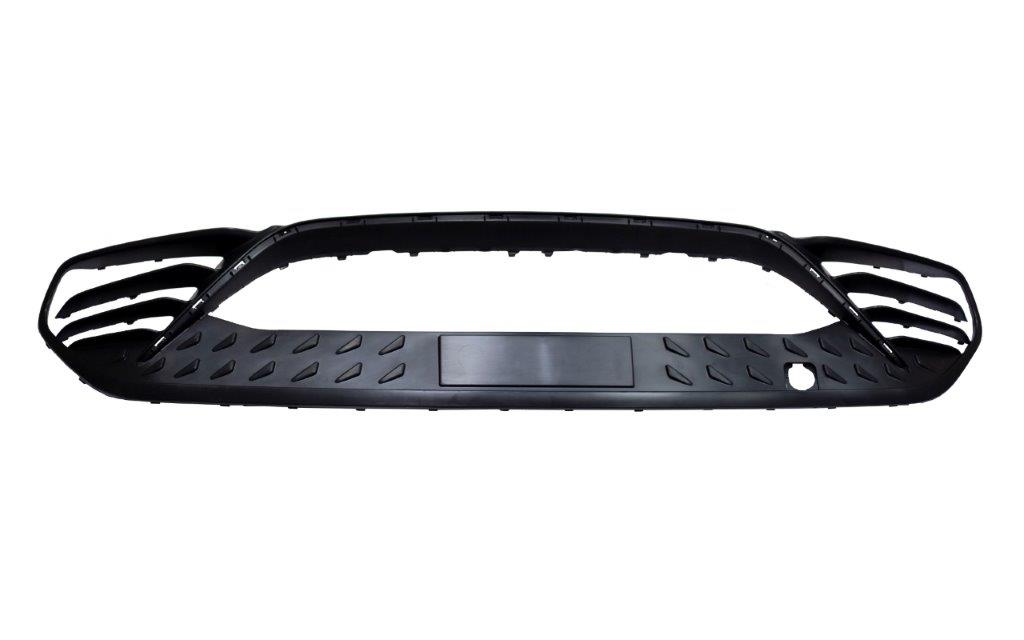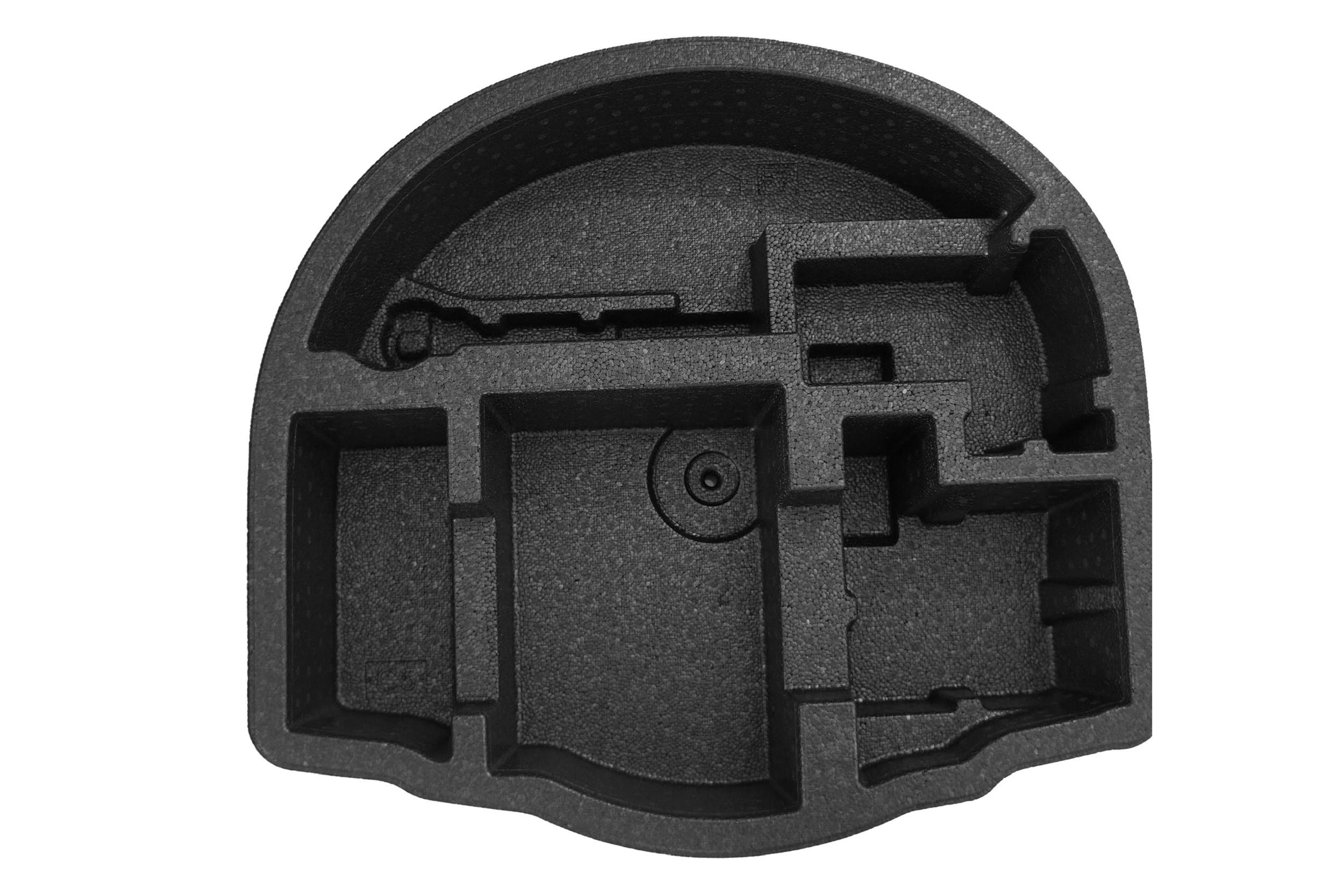The development of the automotive industry has always been linked to innovative designs and material discoveries. For example, the invention of plastics made it possible to reduce fuel consumption and increase the range of cars. Due to the ease of moulding them into different shapes, the aerodynamics, ergonomics and design of a vehicle can be easily optimised, which would be much more difficult if traditional metal and glass were used. Modern plastics have also played a significant role in the development of safety systems in cars. Today they not only contribute to reducing CO2 emissions, but also improve cars’ sustainability and circular economy characteristics.
Automotive trends – how do plastics influence the future of cars?

Lower kerb weight and greater energy efficiency, complete design freedom, optimum shock absorption and circular design – these are just some of the benefits that modern plastics offer to today's automotive industry. These state-of-the-art materials continue to accompany car manufacturers in the successive revolutionary changes that the automotive industry is undergoing. Above all, they open up entirely new horizons for vehicle design. By using modern manufacturing technologies for injection-moulded car components and 3D printing technology, multiple functions can be easily combined in small but complex components. This means seamless integration of sensors and wiring, which is key to the development of autonomous, smart and highly safe vehicles. The issue that is currently most influencing the transformation of the automotive industry is sustainability. Innovative materials, including bio-composites and recycled plastics, make it possible to reduce a vehicle's carbon footprint as early as at the manufacturing stage. In this context, it is crucial to develop technologies that enable plastic components to be processed in closed process circuits without loss of quality, which is important for the future development of sustainable mobility.
Expanded polypropylene (EPP) and expanded polystyrene (EPS) – significant players in the modern automotive industry
Expanded plastics such as EPP (expanded polypropylene) and EPS (expanded polystyrene) are widely used in modern automotive applications. Due to its foamy structure EPP and EPS components combine exceptional lightness with good mechanical properties. EPS is characterised above all by its excellent insulation properties – both thermal and acoustic. It has optimum resistance to static loads, but due to its greater brittleness compared to EPP, it is suitable for applications where insulation and weight reduction are most critical. Combined with the low cost of the material, this means that it is often used, for example, for door panels, infill elements or in noise dampening systems inside the cabin. EPP (expanded polypropylene), on the other hand, is distinguished by its significantly higher elasticity and resistance to dynamic loads. Its unique feature is its capability of the so-called elastic recovery, making it ideal for applications where efficient energy absorption is required. The material is also chemically inert and resistant to moisture, high temperatures (up to approx. 150 °C) and UV radiation. This remarkable versatility of EPP means that components made from it retain their properties even under harsh operating conditions, which is crucial in the automotive industry. This resilient foam material is particularly popular for filling seats, armrests or headrests. The properties of EPP and state-of-the-art manufacturing technologies also allow for the precise manufacturing of highly aesthetic front sun visors with high functionality.
Innovative plastics. Sustainability and recycling in the automotive industry
Today, alternative materials such as bioplastics, recycled plastics and materials with a low carbon footprint are gaining importance in the automotive industry. They are the perfect response to the increasing environmental requirements, tightening regulations and consumer expectations. Their use allows automotive companies not only to reduce their CO2 emissions and reduce consumption of non-renewable raw materials, but also to implement increasingly sustainable manufacturing processes.
For example, bioplastics made from biomass have a lower carbon footprint than traditional plastics, as their production process involves less energy consumption and greenhouse gas emissions. In addition, many of them can be biodegraded or composted, which is an important advantage in the area of waste management. Recycled plastics are a big step towards the transition from a linear economy to a circular model. Their use leads to a reduction in the consumption of primary raw materials and thus a reduction in the carbon footprint of the entire manufacturing process. Companies such as Ford, Opel and Skoda have been using components enriched or made entirely from post-consumer recyclate for years.
Another noteworthy innovation is plastics with a low carbon footprint that are produced, for example, using renewable energy or using alternative raw materials that do not require as much energy as traditional ones. Automotive companies implement these solutions by, among other things, modernising their manufacturing technologies and investing in research and development, partnering and collaborating with suppliers of innovative materials and adapting designs to new materials with the help of experienced engineers. At Knauf Industries, we offer both proven quality materials and state-of-the-art processing, as well as expert advice on how to adapt a design to meet stricter environmental requirements while maintaining other properties.
Composite materials in the automotive industry: state-of-the-art solutions for manufacturing components
Over the last few years, there has been a consistent increase in interest in composite materials, especially those reinforced with glass fibre (GFRP) and carbon fibre (CFRP). The innovative resin-fibre combination is distinguished by its excellent strength-to-weight ratio and can therefore be successfully used in the production of car bodies, body components and safety systems, e.g. for sports and luxury cars. Thanks to the right balance of strength, stiffness and fatigue resistance, they make it possible to design ultralight monocoques (safety beams) and load-bearing structures that are much lighter than their metal counterparts, which means better performance in motorsports, for example. In addition, thanks to their ability to be moulded into complex shapes, composites can also be used to manufacture door and roof panels, as well as design elements. In addition to their striking appearance and resistance to scratching and weathering, these components offer good thermal and acoustic insulation. Composites also find excellent application in the energy absorption zones of cars. The ability of carbon fibres to absorb and dissipate energy makes them ideal for bumpers, especially in sports vehicles. Unlike metals, composites are resistant to moisture, salt and aggressive environmental agents, resulting in lower maintenance costs and longer component life.
The future of plastics in the automotive industry What innovations should we expect in the future?

Very big changes in the area of automotive materials are very likely. So-called smart, self-repairing materials and those with electronic functions have a special role to play. This is due to the increasing demands for safety, eco-friendliness and energy efficiency. For example, thanks to smart materials that dynamically adapt their properties to changes in temperature, stress or lighting, a vehicle design can guarantee greater comfort and safety, but also durability. Such forward-looking materials include EPP shape memory foam, which returns to its original shape under certain conditions.
Self-repairing materials, which use mechanisms that allow them to automatically repair minor damages such as microcracks or scratches, are also an interesting solution. These solutions are based on embedded microcapsules with repair substances or thermal reactions that activate a 'healing' process. In the future, their use can significantly reduce the need for repairs and increase the life of components, which is environmentally friendly. Materials that combine structural functions with the ability to collect and process data are also an extremely forward-looking trend. They can incorporate embedded conductors, sensors or even communication systems, so that vehicle components are able to monitor operating conditions such as temperature, stress or damage. The use of such technology will enable, among other things, vehicle diagnostics or improved energy management. In conclusion, these technologies pave the way for the next revolution in vehicle design.